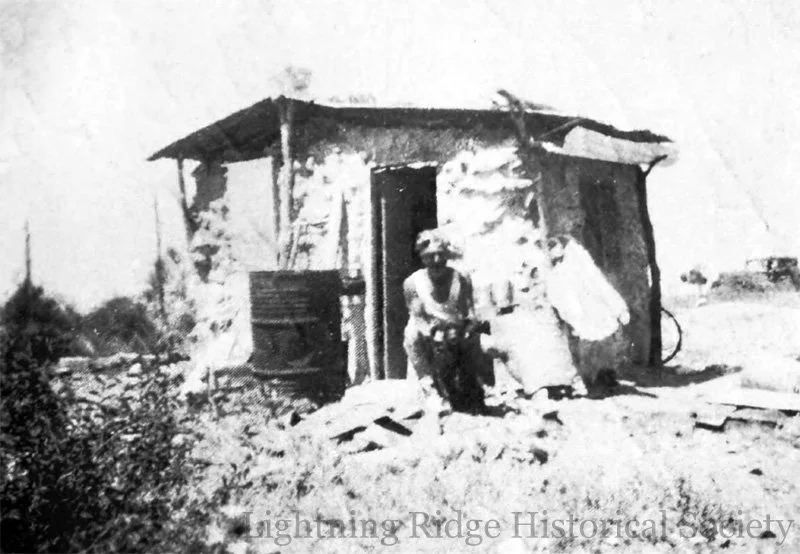Hornet’s Rush
Jack “The Hornet” Franklin with his mud hut.
Hornet’s Rush is an opal field located northeast of the Lightning Ridge Cemetery, near the old Woolooroo boundary fence. It was discovered around 1930–34 by Jack Franklin, known as “The Hornet.”
Franklin was an Englishman who arrived at the Ridge in the late 1920s or early 1930s. He built a distinctive mud hut on a rise near the intersection of Pandora and Opal Streets, shaping it with stone and scrap timber. Its resemblance to a wasp’s nest earned him his nickname, which was later attached to the field he discovered.
Hornet’s Rush produced good black opal, both nobbies and seam, at depths ranging from 4 to 20 feet. Franklin reportedly made about £500 before selling the claim to Johnny Boules, who went on to recover at least £1,200 worth. The field remained productive into the middle of the century. Other successful claims were worked by “Silent” Jim Reid, Peter Ferguson, Tommy Gale, and George Andy. Stuart Lloyd records total production from the field at £18,500 by 1967.
Article: Research by Russell Gawthorpe and Leisa Carney, edited by Russell Gawthorpe. LRHS research compiled by Len Cram and Barbara Moritz. Sources: The Lightning Ridge Book, Stuart Lloyd, 1967, p. 64; Lightning Ridge - The Home of the Black Opal: Unique to the World, Gan Bruce, 1983, p. 78; Discover Opals: Before and Beyond 2000 with Surface Indications, Stephen Aracic, 1996, p. 139.

